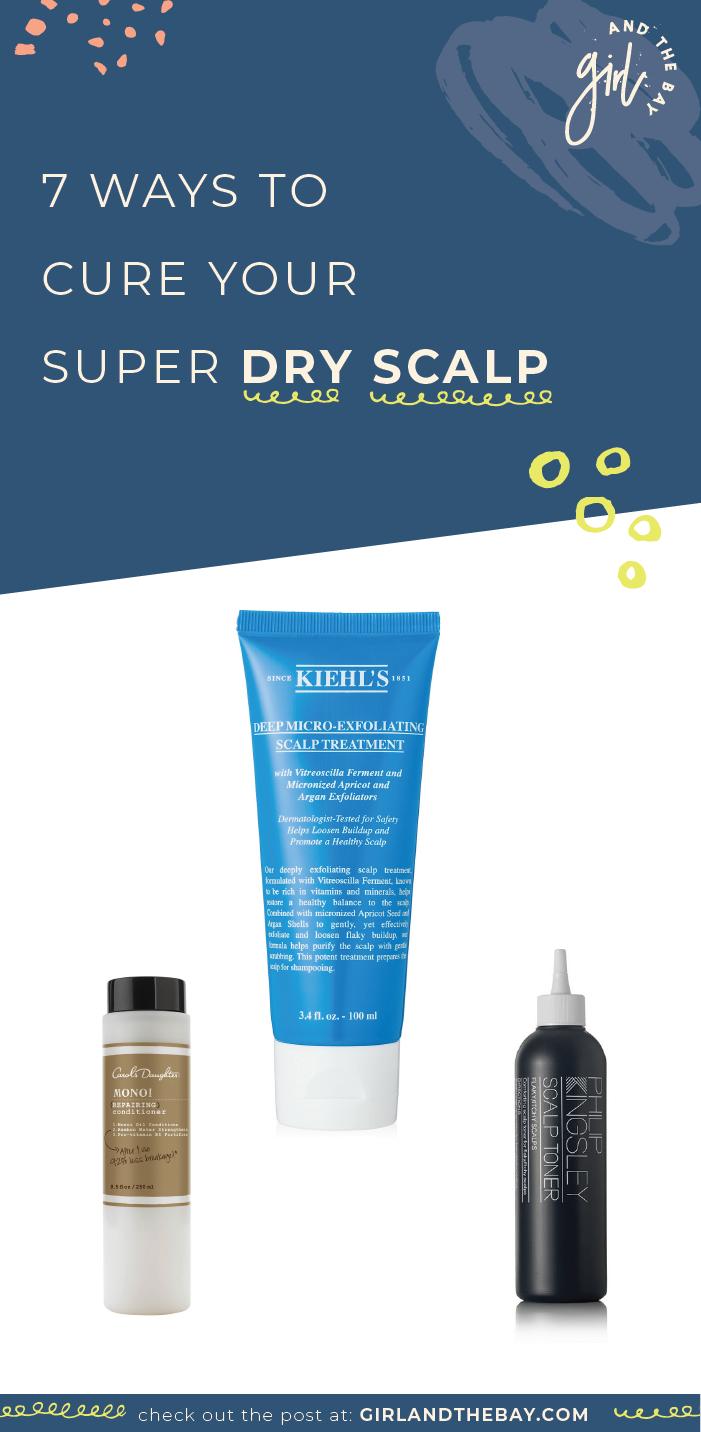7 Ways to Cure Your Super Dry Scalp
Of all the winter beauty woes we get hit with, dry-scalp issues are certainly the least glamorous. While it’s a bit of an awkward subject, a lot of people suffer from scalp concerns. We better start talking about it, right?
We assure you that scalp problems are nothing to be embarrassed about. There’s a slew of solutions to soothe dryness, and the tightness and flaking that tend to come with it. To prove it, we tapped Stephen D. Pullan, a trichologist at the Philip Kingsley Clinic, to give us the lowdown on exactly how to alleviate these uncomfortable issues.
Ahead, seven tips for saving your scalp — whether you’re suffering from mild itchiness or full-on flakiness. Click through to find an answer to your dandruff dilemmas, and be sure to let us know in the comments what’s worked for you.
1. Exfoliate
Just like our bodies need a good slough to remove dead skin once in a while, our scalps need that exfoliation as well — sans the scrub, though. Instead, Pullan suggests using an intensive exfoliating scalp mask once or twice a week to reduce flakiness, counteract buildup, and soothe irritation.
Kiehl's Deep Micro-Exfoliating Scalp Treatment, $20
2. Try A Tonic
To keep redness and flakes at bay, apply a leave-in tonic post-shampoo. “After cleansing the scalp thoroughly, it can help to apply a toner directly to areas of the scalp that you’d like to target most,” says Pullan. “A tonic permeates deeply, which offers long-lasting relief.” Opt for calming ingredients, such as glycerin and aloe.
Philip Kingsley Flaky Itch Scalp Toner, $36
3. Use A Therapeutic Shampoo
Whether your scalp issues are mild or severe, it’s always best to steer clear of shampoos with harsh irritants and fragrances. Pullan recommends a therapeutic shampoo with coal tar. (Neutrogena's is the gold standard.) While it may sound like a scary ingredient, the FDA has deemed under-5% concentrations in OTC products safe for use. “Tar is something we add when treating excessively itchy or flaky scalps,” says Pullan. Other ingredients common in scalp-soothing shampoos include zinc, salicylic acid, and tea-tree oil.
Neutrogena T-Gel Therapeutic Shampoo, $7.49
4. Start From The Inside
Pullan stresses the importance of treating scalp problems through hydrating and eating nutrient-rich foods, in addition to topical treatments. “When we’re evaluating patients, we always tell them to drink tons of water and eat foods such as avocado, salmon, nuts, and anything containing essential omega-3 oils,” he says. That's all good and fine — but for the girl on the go, there are always capsules.
100% Wild Alaskan Fish Oil Dietary Supplement Softgels, $4.99
5. Oil Up
Applying skin-loving oils directly to the scalp can be extremely beneficial in combating dryness and soothing irritation. Coconut and jojoba oils both contain anti-inflammatory and anti-fungal properties, while olive oil expertly conditions with squalene, a naturally derived lipid used to protect and lubricate the skin.
Desert Essence 100% Pure Jojoba Oil, $9.99
6. Apply Conditioner Strategically
Go ahead, apply your favorite conditioner liberally from the mid-lengths to the ends of your strands, but resist the urge to massage it into your scalp — it will only do harm, Pullan tells us. “Conditioner is meant to moisturize hair, not skin,” he says. “It will clog the pores in your scalp and cause further issues with buildup.”
Carol's Daughter Monoi Repairing Conditioner, $22
7. See A Doctor If You Need To
If you’ve tried it all and your scalp issues persist or worsen, it may be time to see a dermatologist about getting a steroid or cortisone treatment — or even an antibiotic. What’s not normal? Bleeding, excessive buildup, and scabbing. Make the appointment sooner rather than later to assuage this painful problem.






